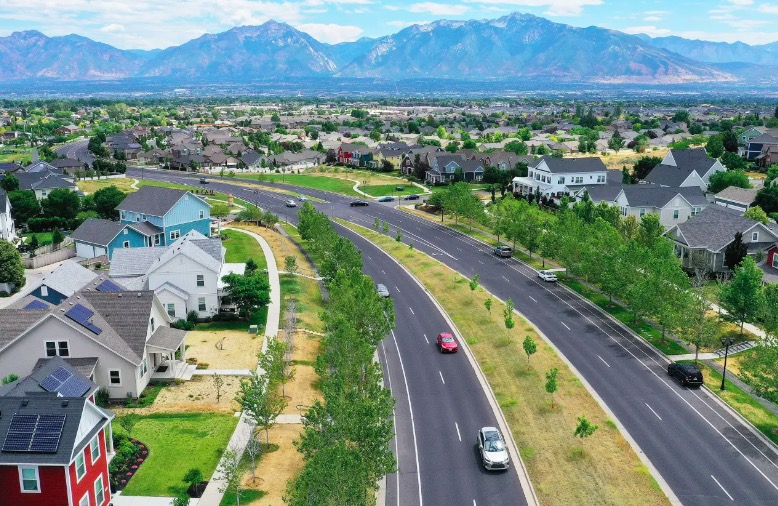July was an even more sluggish month for the U.S. housing market as sales of previously owned homes slipped by 6% from June and a whopping 20.2% year over year.
Home prices are still high, though, with the median existing home sales price up 10.8% from a year earlier to $403,800 — though that’s down slightly from the previous month when it was $413,800, a record high.
Meanwhile, inventory continues to tick up as an increasing number of priced-out buyers drop out of the market and sellers grapple with the hangover left in wake of the pandemic housing market frenzy that has now simmered down.
All this is according to the National Association of Realtors’ latest monthly report issued this past week, which is the latest indicator that the U.S. housing market is in what a growing chorus of experts are deeming, indeed, a recession.
But be careful. The word “recession” applies to certain dynamics happening within today’s market — and doesn’t equate fully to the global recession we all know from the housing bubble burst in 2006.

Lawrence Yun, chief economist for the National Association of Realtors, explains:
“We’re witnessing a housing recession in terms of declining home sales and homebuilding. However, it’s not a recession in home prices. Inventory remains tight and prices continue to rise nationally with nearly 40% of homes still commanding the full list price,” Yun said in a prepared statement.
The dampening of sales, Yun said, “reflects the impact of the mortgage rate peak of 6% in early June.” He predicted home sales could stabilize soon “since mortgage rates have fallen to near 5%, thereby giving an additional boost of purchasing power to home buyers.”
Also this week, Zillow again revised its housing forecast down from what was an initial prediction in March that U.S. home prices would rise by almost 18%. But then the Federal Reserve waged its war on inflation, mortgage rates shot up from under 3% to over 5%, and the U.S. housing market hit an unmistakable slowdown.
Thursday, Zillow revised its forecast “down significantly due to a sharp downturn” in July, now forecasting only 2.4% home value growth through the end of July 2023. Zillow also predicts 5.3 million existing homes will sell this year, which would be a 14.1% decline from 2021.
What does this mean for buyers, sellers?
According to RE/MAX’s July national housing report, housing inventory jumped for the fourth consecutive month. There were 13.3% more homes for sale than in June and 30.4% more than a year ago. Months supply of inventory has doubled since May, according to the report, now at 1.8, while homes typically spent 24 days on market. New listings, meanwhile, dropped 7.8% compared to June and 7.2% compared to July of last year.
For Nick Bailey, president and CEO of RE/MAX, that is good news for homebuyers in a market that’s slowly shifting more in their favor.
“It’s an exciting time to be a homebuyer. For the first time in years, we’re seeing sustained inventory gains and the slowing of home price appreciation,” Bailey said. “The market is rebalancing after favoring sellers for so long. There’s still ground to make up with new construction, but the change in recent months has brought some much needed relief to buyers.”
Bailey, however, also argued there’s good news for sellers, too. “A calming market doesn’t mean a stoppage — and there are plenty of benefits to being on that side of the equation.”
These metros see the biggest slowdowns. Here’s where Utah ranks
Of the 53 metro areas surveyed in RE/MAX’s July report, Salt Lake City was among the top five markets that saw the biggest year-over-year decrease in closed transactions, with a 39.3% decline.
Here’s how they ranked:
Houston: 5,836 transactions in July down from 10,625 in July 2021, a 45.1% decrease.
San Diego: 2,242 transactions, down from 3,875 in 2021, a 42.1% decrease.
Miami: 6,497 transactions, down from 11,001 in 2021, a 40.9% decrease.
Salt Lake City: 1,137 transactions, down from 1,874 in 2021, a 39.3% decrease.
Las Vegas: 2,730 transactions, down from 4,394 in 2021, a 37.9% decrease.
Inventory of homes also saw a dramatic boost as sales slowed. The number of homes for sale in July was up 13.3% from June and up 30.4% from July 2021, according to RE/MAX. Based on the rate of home sales in July, the months’ supply of inventory increased to 1.8 compared to 1.4 in June and 1.2 in July 2021.
Salt Lake City also ranked in the top five markets that saw the biggest year-over-year increase to months’ supply of inventory in July, according to RE/MAX.
Here’s how they ranked:
Raleigh, North Carolina: 1.6 months’ supply of inventory, up 257.4% from 0.5 in July 2021.
Phoenix: 4.4 months’ supply, up 254.3% from 1.2 in July 2021.
Las Vegas: 3.8 months’ supply, up 252.9% from 1.1 in July 2021.
Salt Lake City: 2.2 months’ supply, up 209.9% from 0.7 in July 2021.
San Diego: 2 months’ supply, up 191.5% from 0.7 in July 2021.
We’ve already seen the impact of slowing sales and rising inventory here in Utah. Last month, housing data released by the Salt Lake Chamber showed Utah actually saw a small dip to its median home price in June, down to $530,000 from $535,050 in May.
This means Utah’s home prices are beginning to “stabilize,” as the Salt Lake Chamber put it. It’s actually welcome news in a housing market that’s been battering homebuyers, said Dejan Eskic, a senior research fellow at the University of Utah’s Kem C. Gardner Institute and one of Utah’s leading housing experts. He’s also the chief economist for the Salt Lake Board of Realtors.
“After two years of a frenzied market with multiple offers tens of thousands of dollars above asking price, Utah’s real estate market is approaching normalcy,” Eskic said.
The Article is from Deseret News, copyright belongs to owner





